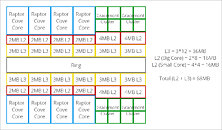BeaglePlay From BeagleBoard.org Brings Fun to Building With Computers
The BeagleBoard.org Foundation today announces the global availability of BeaglePlay, the most adaptable open-source performance platform available. Built on our proven open source Linux approach, BeaglePlay has a feature set that includes built-in wired and wireless connectivity and ability to connect to a wide selection of sensor and prototyping systems with thousands of options, as well as interfaces and processing performance to support them.
Leveraging the Texas Instruments AM625 processor with quad 64-bit Arm Cortex -A53 cores, low-latency microcontroller subsystems, a dedicated Texas Instruments SimpleLink CC1352P7 sub-1 GHz and 2.4-GHz wireless MCU, and a Texas Instruments WiLink WL1807MOD Wi-Fi module, new and experienced users can use a wide variety of application libraries and examples from Linux, Zephyr, MicroPython and numerous other open source frameworks to add an endless array of sensors, actuators, indicators and new connectivity options.
Leveraging the Texas Instruments AM625 processor with quad 64-bit Arm Cortex -A53 cores, low-latency microcontroller subsystems, a dedicated Texas Instruments SimpleLink CC1352P7 sub-1 GHz and 2.4-GHz wireless MCU, and a Texas Instruments WiLink WL1807MOD Wi-Fi module, new and experienced users can use a wide variety of application libraries and examples from Linux, Zephyr, MicroPython and numerous other open source frameworks to add an endless array of sensors, actuators, indicators and new connectivity options.
























































